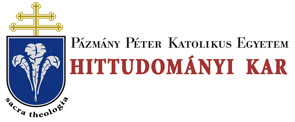Folia Theologica et Canonica, Supplementum (2016)
Szabolcs Anzelm Szijromi, O.Praem., Relationship among the Holy See, Czech-, Polish-and Hungarian Kingdoms in the 13"'-14" century
208 SZABOLCS ANZELM SZUROMI 1246(one year after the Council of Lyon I); moreover the Council of Krakow in 1189 and the Council of Wroclaw in 1248. This very last council gave a special emphasize to promotion of the various religious activities of faithful. Thanks to the presence of the Papal legate, this council prescribed the participation at the Sunday Masses and at the solemnities in order to hear the Gospel, to pray the “Our Father” and the Creed. Among the members of this assembly we can find the Archbishop of Gniezno, and the bishops of Krakow, of Poznan, and of Plock.52 Few years later arrived to Hungary Cardinal Guido who had leaded the National Council of Esztergom in 125253 54, held under the reign of King Adalbert IV (1235-1270). He was acting at that time as legate of the territories of Germany, Hungary, and Poland. Similarly, there was another council in the presence of papal legate, namely the Council of Buda in 1263, with the participation of legate Angelus authorized by Pope Urban IV (1261—1264)s4, as well as the National Council of Buda in 127955, with the participation of legate Philip (Philipp de Fermo).56 This latter council contributed with numerous canons to the adjustment of the domestic ecclesiastical discipline. The composition of the accepted canons is important also because we can find in them those fundamental themes which characterized the universal conciliar legislation after the Council of Lateran IV. In the same time we can find among them also those topics that appeared among the accepted canons of the Council of Lyon II (1274), held not much earlier. From among its rich canonical material we would like to refer to the wearing of a tonsure57 (which is regulated in the Decretum Gratiani with three canons58, and in the Liber Extra [1234] with two canons)59; to the prohibition for the clergy to visit public baths60 (which was in full harmony with that ecclesiastical disciplinary material on the obligations of the clergy, as well as on their worthy form of life, that was inserted into the canonical collections of the 11th and 12lh centuries)61; to the prescription for the clergy to stay clear of military actions62 (which can be found also in Consti52 Hefele, Ch.-J. - Leclercq, H., Histoire des concites, V. Paris 1913. 1707-1709. 53 péTERpy, C., Sacra concilia ecclesiae Romano Catholicae in regno Hungáriáé celebrata, 1. Posoniae 1742. 87-90. About the date and peculiarities of this council cf. Waldmüller, L., Die Synoden, 177-180. 54 Waldmüller, L., Die Synoden, 181-183. 55 PÉTERFY, C., Sacra concilia ecclesiae, I. 90-126. 56 About the council in detailed cf. Waldmüller, L., Die Synoden, 188-200. 57 Can. 1 : Péterfy, C., Sacra concilia ecclesiae, I. 107. 58 D. 23 c. 22: Friedberg I. 85; D. 23 c. 32: Friedberg I. 87; D. 41 c. 8: Friedberg I. 150. 59 X 3.1.7-8: Friedberg II. 450. “ Can. 5: Péterfy, C., Sacra concilia ecclesiae, I. 108. 81 Cf. Szuromi, Sz. A., Development of the Clerical Duties and Rights Based on the 11'h-12lh centuries Canonical Collections, in Folia Canonica 10 (2007) 137-150. 62 Can. 7: Péterfy, C, Sacra concilia ecclesiae, I. 108.
